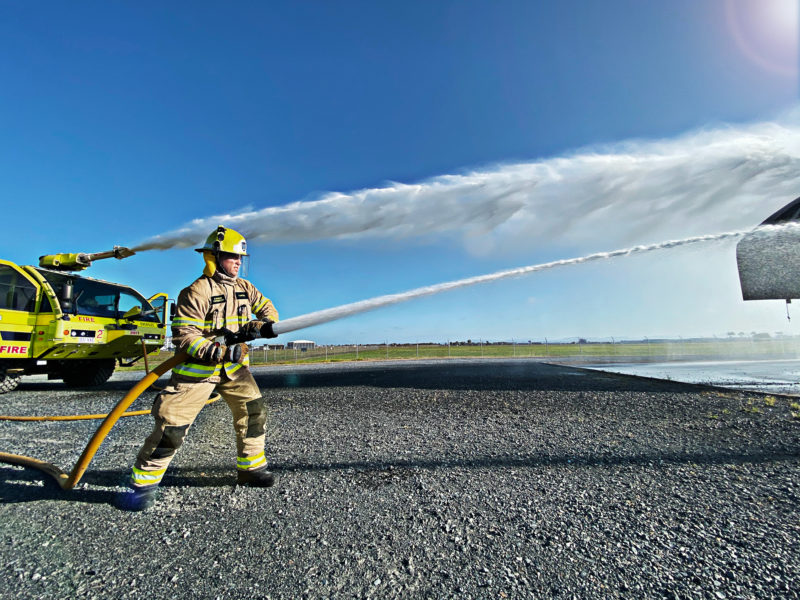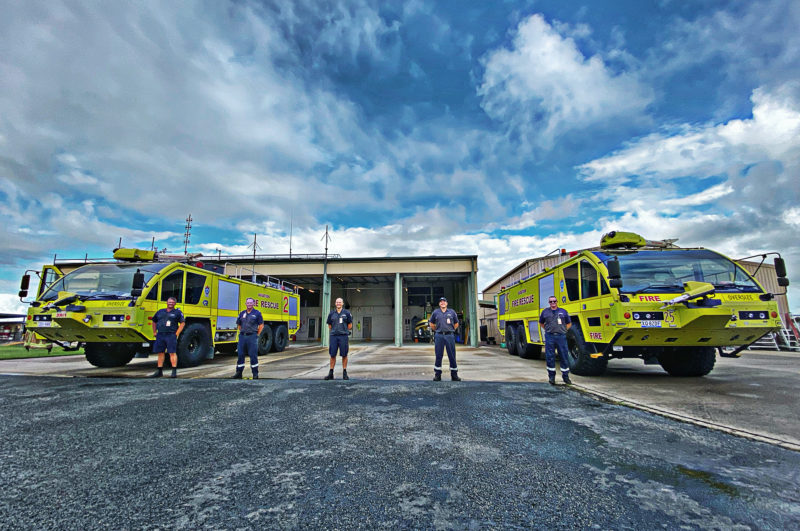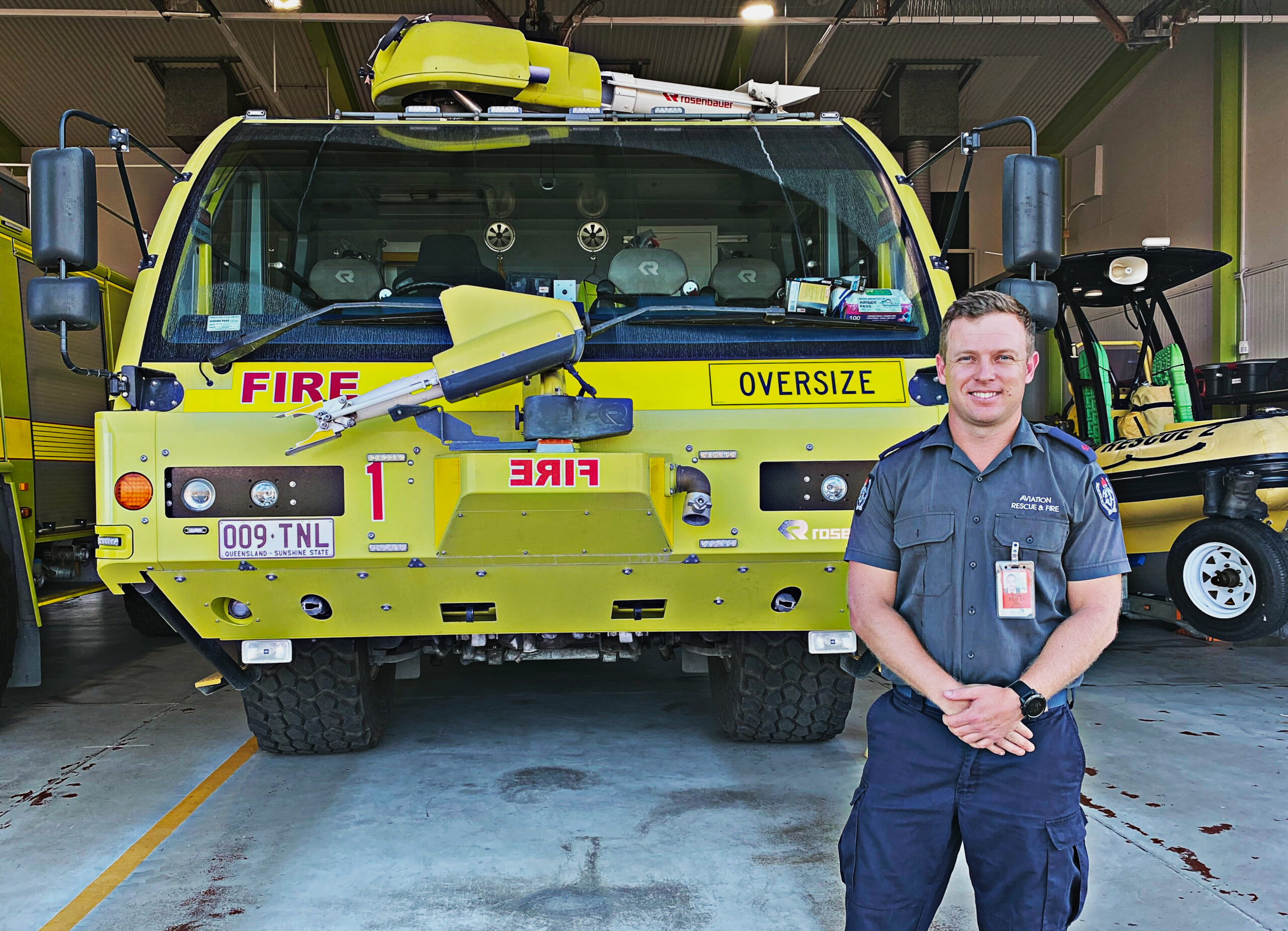If you’ve ever seen airport firefighters, chances are they were doing a water cannon salute. Despite their somewhat elusive presence, Aviation Rescue Firefighters (ARFF) play a crucial role in protecting the flying public at most major airports.
Beau Tanton is an ARFF based in Mackay, Queensland, Australia. This regional airfield is by no means Australia’s busiest; however each of its 80,000 monthly passengers can be assured that in an emergency, Beau’s team will be anywhere in the airport within 2 minutes.
The Australian ARFF Service is one of the world’s largest, with more than 900 operational and support staff to protect people and property from aircraft incidents and fires at the airport.
Last financial year, Airservices ARFFS responded to more than 5,500 incidents across Australia and saved 11 lives. Let’s see how it all happens.

Can You Tell me About a Day-in-The-Life of an ARFF?
When we met Beau, he was on a 16.5-hour shift from 05:30 to 22:00. His team is made-up of two senior officers and four firefighters.
- Firstly, Beau arrives and completes the handover from the previous shift. Any major issues are addressed and the team is briefed on the day’s happenings
- Next, Beau is delegated the task of checking the airport’s three operational fire trucks. Each has to be ready to fight any fire at a moment’s notice, so a thorough inspection is essential
- Additionally, Mackay Airport is located beside the ocean; so the ARFFS operates a water rescue boat, in case of an aircraft ditching. This boat has to be checked each shift
- Next, Beau and his team will complete a training scenario. Today, they are simulating an engine fire. Each firefighter has the opportunity to extinguish the mock-blaze
- After a break, the team have a physical training (PT) session. The ARFFS have dedicated personal trainers, who guide the firefighters through team-based physical obstacles and workouts
- Throughout the day, Beau is on-call and ready to respond to any incident at a moment’s notice. In the afternoon, the team complete any necessary tasks, as well as remaining on standby

What is Your Favourite Part of The Job?
“Most importantly, it’s the team atmosphere that comes with the job. Having a supportive and cohesive team is essential in saving lives.
Additionally, I am proud that my job revolves around helping people every day!”
What Has Been The Most Memorable Moment in Your Career?
Beau’s most rewarding and fulfilling experience has been saving a child, who was trapped in an airport elevator. Working in conjunction with civilian agencies, Beau managed to extract the young child safely and injury-free.

What is The Most Challenging Aspect of Your Job?
“The recruit course, definitely. Coming from the civilian life, with no firefighting experience at all, the training in Melbourne was incredibly tough.
We were put through a series of intense physical and mental tests, which is required if you are to be ready to respond to any emergency.”
Finally, How do you Deal With Stress?
Naturally, the ARFF role can be stressful and Beau finds debriefs to be an important component in each incident. By debriefing as a team, each firefighter can learn lessons from the incident; it is also the right opportunity to ensure that everyone can get access to the necessary support.
In classic Australian fashion, each ARFFS member’s best resource is their colleagues. Each member of the team is, in Beau’s eyes, a “mate”.




